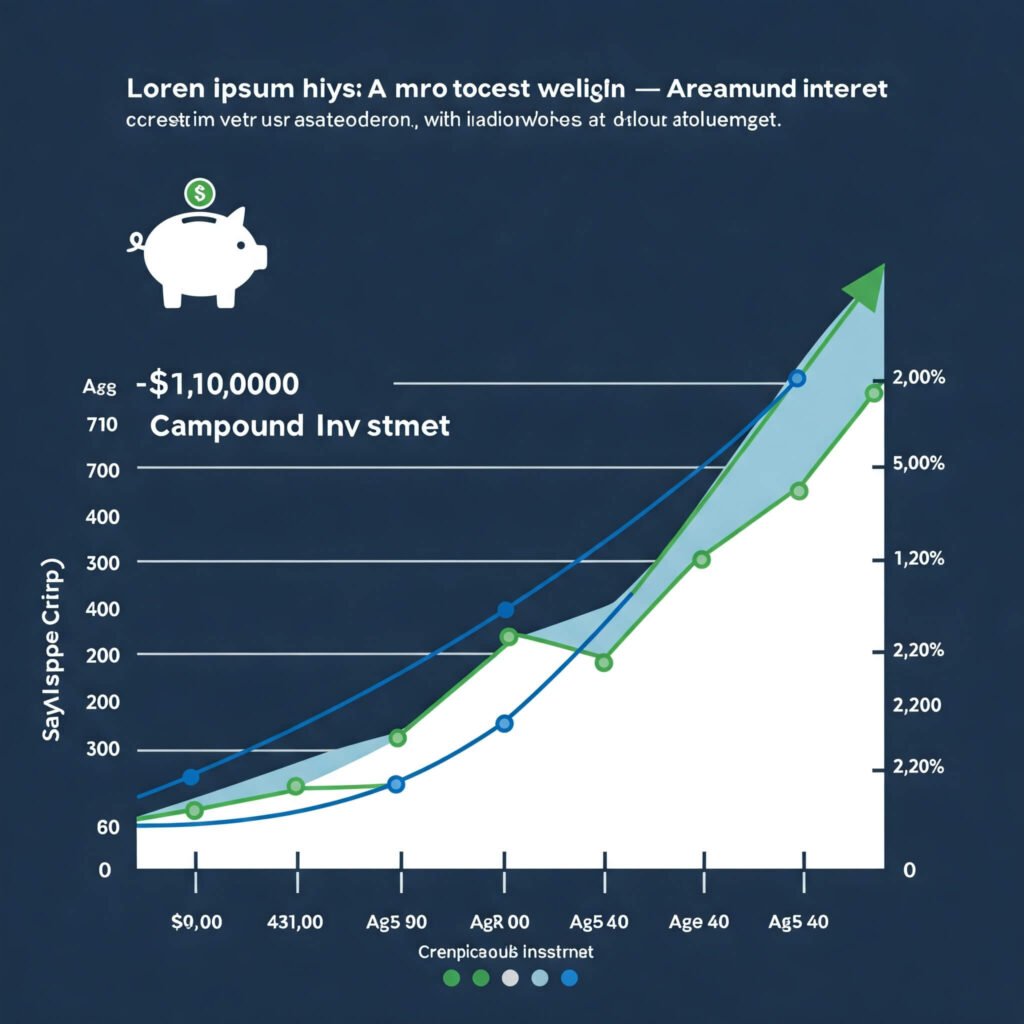Retirement planning in your 30s might sound premature, but it’s the perfect time to lay the foundation for a financially secure future. Starting early leverages the power of compound interest and gives you flexibility to weather economic ups and downs. This guide breaks down actionable steps to kickstart your retirement journey, offering insights, examples, and expert-backed strategies to help you retire comfortably.
Why Start Retirement Planning in Your 30s?
Your 30s are a sweet spot for retirement planning. You’re likely earning more than in your 20s, and time is still on your side. According to the U.S. Federal Reserve, the median retirement savings for Americans aged 35-44 is just $60,000—far below what’s needed for a comfortable retirement. Starting now ensures you’re not playing catch-up later.
Key Benefits of Early Planning:
- Compound Interest: Money saved now grows exponentially over decades. For example, $10,000 invested at age 30 with a 7% annual return could grow to over $76,000 by age 65.
- Financial Flexibility: Early savings allow you to take calculated risks, like investing or starting a side hustle.
- Habit Formation: Budgeting and saving become second nature, setting you up for long-term success.

Step 1: Assess Your Financial Situation
Before diving into retirement planning in your 30s, take stock of your finances. Understanding your income, expenses, debts, and savings provides a clear starting point.
How to Evaluate Your Finances
- Track Income and Expenses: Use apps like Mint to monitor cash flow.
- Calculate Net Worth: List assets (savings, investments) and subtract liabilities (student loans, credit card debt).
- Review Debt: Prioritize high-interest debt repayment to free up funds for savings.
Example: Sarah, a 32-year-old marketing manager, realized she was spending $500 monthly on dining out. By cutting back to $200, she redirected $300 to her 401(k), boosting her retirement savings.

Step 2: Set Clear Retirement Goals
Retirement planning in your 30s requires a vision. Do you want to retire at 60 and travel the world, or work part-time into your 70s? Defining goals helps determine how much you need to save.
Tips for Setting Goals
- Estimate Retirement Costs: Use calculators like Vanguard’s Retirement Planner to estimate future expenses.
- Factor in Lifestyle: Account for healthcare, housing, and leisure activities.
- Plan for Inflation: Assume a 2-3% annual increase in living costs.
Pro Tip: Aim to replace 70-80% of your pre-retirement income. For example, if you earn $80,000 annually, target $56,000-$64,000 per year in retirement.
Step 3: Maximize Retirement Accounts
Retirement accounts like 401(k)s and IRAs are cornerstones of retirement planning in your 30s. They offer tax advantages and employer matching in some cases.
Best Accounts to Consider
- 401(k): Contribute at least enough to get your employer’s match—typically 3-6% of your salary. In 2025, the contribution limit is $23,000.
- Traditional or Roth IRA: Contribute up to $7,000 annually (2025 limit). Roth IRAs are ideal for young professionals expecting higher taxes in retirement.
- SEP IRA: For freelancers, this allows higher contributions based on income.
Example: Mark, a 35-year-old engineer, maxes out his 401(k) match and contributes $7,000 to a Roth IRA yearly. By age 65, his investments could grow to over $1.2 million, assuming a 7% return.

Step 4: Invest Wisely for Growth
Investing is critical for retirement planning in your 30s. The goal is to grow your savings faster than inflation.
Smart Investment Strategies
- Diversify: Spread investments across stocks, bonds, and real estate via index funds or ETFs.
- Low-Cost Funds: Choose funds with expense ratios below 0.5%, like those from Fidelity.
- Automate Investments: Set up automatic contributions to stay consistent.
Data Insight: According to Morningstar, low-cost index funds outperform actively managed funds 80% of the time over 10 years.
Step 5: Build an Emergency Fund
An emergency fund protects your retirement savings from unexpected expenses, like medical bills or job loss.
How to Build It
- Save 3-6 Months’ Expenses: Aim for $15,000-$30,000, depending on your lifestyle.
- Use High-Yield Savings: Accounts like Ally Bank offer competitive interest rates.
- Start Small: Save $50 monthly until you reach your goal.
Step 6: Work with a Financial Advisor
Retirement planning in your 30s can be complex. A certified financial planner (CFP) can tailor strategies to your goals.
Benefits of Professional Guidance
- Personalized Plans: Advisors adjust strategies based on your risk tolerance and timeline.
- Tax Optimization: They help minimize tax liabilities on investments.
- Accountability: Regular check-ins keep you on track.
Pro Tip: Use platforms like XY Planning Network to find fee-only advisors who prioritize your interests.
Common Mistakes to Avoid in Retirement Planning
Retirement planning in your 30s is powerful, but pitfalls can derail progress. Avoid these:
- Not Starting Early: Delaying savings reduces compound interest benefits.
- Ignoring Fees: High fund fees erode returns over time.
- Cashing Out 401(k)s: Withdrawing early incurs taxes and penalties.
Example: Lisa, 38, cashed out her 401(k) when switching jobs, losing 30% to taxes and penalties. She now contributes extra to rebuild her savings.
Take Control of Your Future Today
Retirement planning in your 30s is about taking small, intentional steps that yield big results. By assessing your finances, setting goals, maximizing retirement accounts, and investing wisely, you’re building a foundation for a secure future. Start today—your future self will thank you.
Call to Action: Calculate your retirement needs using an online tool and commit to saving $100 more monthly. Share your progress in the comments!
Outbound Links: Retirement Planning in Your 30s: How to Get a Head Start



